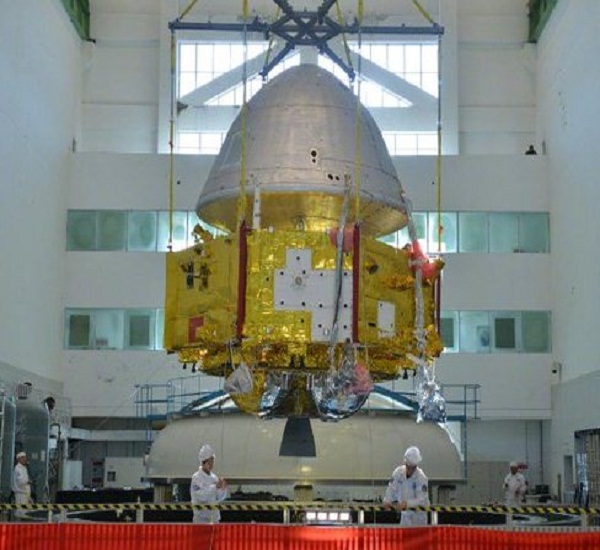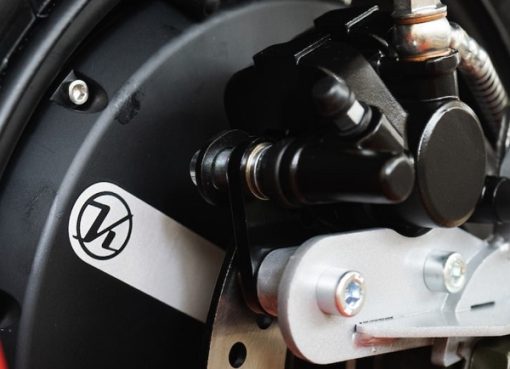It will be China’s first independent attempt at an interplanetary mission, and comes with two ambitious goals. Launching in 2020, China’s Mars mission will attempt to put a probe in orbit around Mars and, separately, land a rover on the red planet.
The mission was approved in early 2016 but updates have few and far between. Last week, a terse update (available here in Chinese) from the Xi’an Aerospace Propulsion Institute, a subsidiary of CASC, China’s main space contractor, revealed that the spacecraft’s propulsion system had passed all necessary tests.
According to the report, the Shanghai Institute of Space Propulsion has completed tests of the spacecraft’s propulsion system for the hovering, hazard avoidance, slow-down, and landing stages of a Mars landing attempt. The successful tests verified the performance and control of the propulsion system, in which one engine producing 7,500 Newtons of thrust will provide the majority of force required to decelerate the spacecraft for landing.
Having previously completed tests of supersonic parachutes needed to slow the craft’s entry into the Martian atmosphere, this means China’s Mars spacecraft is close to ready for its mission.
China was initially considering several sites within two broad landing areas near Chryse Planitia, close to the landing sites of Viking 1 and Pathfinder, and another covering Isidis Planitia and stretching to the western edge of the Elysium Mons region.
According to a presentation at the European Planetary Science Congress-Division for Planetary Sciences Joint Meeting in Geneva in September, China has now chosen two preliminary sites near Utopia Planitia. The mission will have landing ellipses—the areas in which the spacecraft is statistically likely to land—of around 100 x 40 kilometers.

China’s solar-powered Mars rover will, at 240 kilograms, be twice the mass of China’s two lunar rovers. It will carry navigation, topography, and multispectral cameras, a subsurface detection radar, a laser-induced breakdown spectroscopy instrument similar to Curiosity’s LIBS instrument, a Martian surface magnetic field detector, and a climate detector.
The orbiter will be equipped with a suite of science instruments including moderate- and high-resolution imagers. The pair of cameras will be used once in Mars orbit to image the preselected landing sites ahead of separation of the orbiter and rover.
The main barrier to China launching its mission is the status of the Long March 5 rocket required to get the 5-metric-ton spacecraft on its way to Mars.
The Long March 5 is China’s largest launch vehicle, which had its first flight in 2016. However the second launch, in July 2017, failed to achieve orbit. Following at least two redesigns of the engines which power the rocket’s first stage, the Long March 5 is now ready to return to flight.
The rocket is currently being assembled at the Wenchang Satellite Launch Center on Hainan island in southern China, with launch expected in late December. The mission will aim to send a large satellite into geostationary orbit, and in doing so prove the rocket is ready for the later Mars mission launch.
If all goes well, China will join NASA’s Mars 2020 mission, the United Arab Emirates’ Hope Mars Mission and, if parachute issues can be overcome, the ExoMars 2020 mission, in launching during a roughly three-week window from late July to early August 2020. With the advantage of favorable relative positions of Earth and Mars at that time—creating an efficient path known as the Hohmann transfer—the spacecraft would arrive at the red planet around February 2021.
If the Long March 5 does not come through its big test in late December, China will need to wait 26 months before the next Hohmann transfer window opens for Mars, in late 2022.
Getting to Mars is only part of the job. China has already landed spacecraft on the near and far sides of the moon, and members of the successful 2013 Chang’e-3 lunar mission team were assigned to the Mars project. However, landing on Mars presents extra challenges.
The surface gravity of Mars is just 38 percent that of Earth. Simulating the Martian gravitational field adds complexity to terrestrial testing of entry, descent, and landing (EDL) sequences.
Mars has an atmosphere which is too thin to properly aid descent, but thick enough to threaten fast-moving spacecraft with extreme heat from atmospheric friction and compression. This requires a spacecraft to have a heat shield and complex parachute systems which need to be deployed and jettisoned at precisely the right moments.
When the spacecraft arrives at Mars, it will be around 150 million kilometers from Earth, meaning commands traveling at the speed of light will take around 8 minutes to reach their target. This means the entire landing process must be automated. For NASA’s 2012 landing of the Curiosity rover, the team called this period the “7 minutes of terror.”
Several Mars missions have failed during that critical stage, including a 2016 effort by the European Space Agency and Roscosmos of Russia to plant the ExoMars Schiaparelli EDM lander, as well as numerous Soviet missions and NASA’s attempt with its 1999 Mars Polar Lander.
Source: Spectrum










